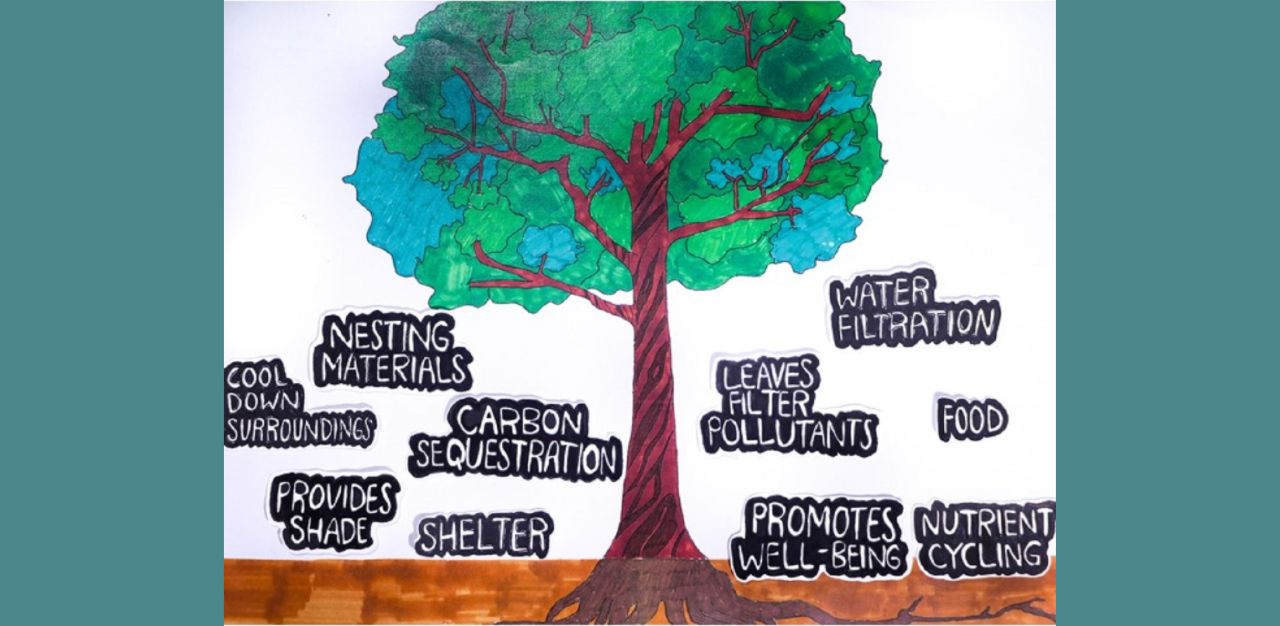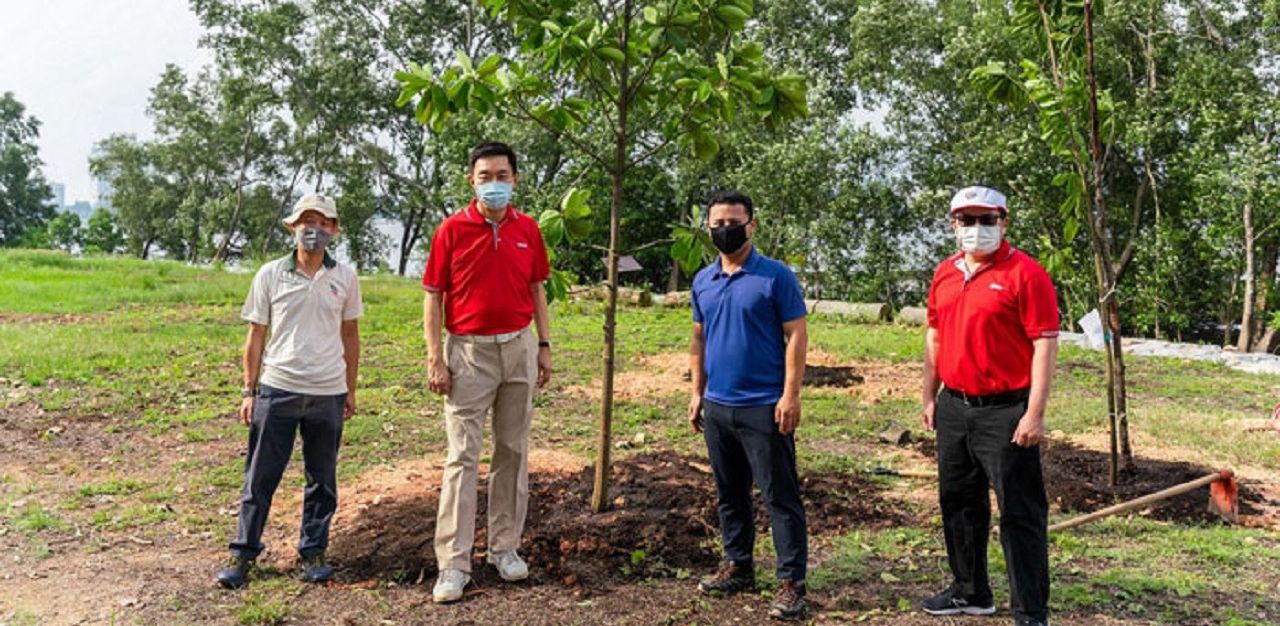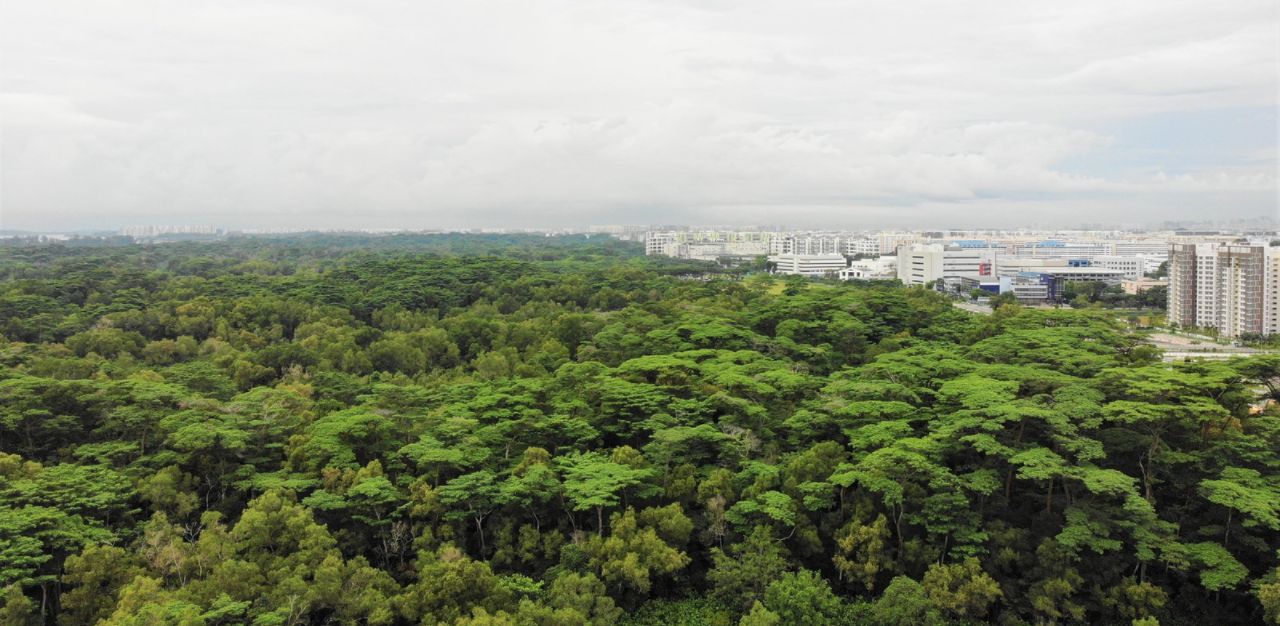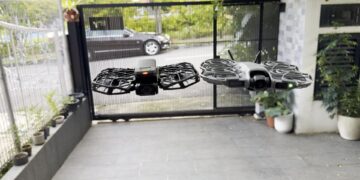It was in 2020 that plans were put out to grow one million trees in Singapore by 2030.
The OneMillionTrees movement, announced then by Minister of National Development Desmond Lee, took its cue from similar initiatives in Europe, North America and Australia. It aims to restore nature to the island nation through the planting of more than a million trees across the country in just 10 years as an effort to transform Singapore into a City in Nature – a key pillar under the Singapore Green Plan 2030.
Based on the assumption that the average forest contains around 50 trees per acre, The Environmentor website says a million trees is equivalent to planting 20,000 acres of forest, or more than 15,000 football fields!
As of 18 March, exactly 338,835 trees have been planted across Singapore, and about 100 individuals and more than 100 groups have pledged to support the Movement, which will take place at streetscapes, gardens, parks and park connectors, nature reserves and nature parks, the National Parks Board (NParks) says.
Dr Adrian Loo, Senior Director, Community Projects for NParks says, “Prior to the launch of the OneMillionTrees movement, NParks was planting around 50,000 trees annually. The movement is a ramping up of our earlier efforts. By planting double the number of trees annually, we will be able to improve our urban environment and enhance our resilience towards climate change.
‘’While we do not have enough details to determine the number of trees that will be affected by developments, the planting of one million more trees will offset the loss from development as Singapore continues to urbanise sustainably.”
In 2017, Treepedia, which uses Google street view data to measure the above-ground portion of trees and vegetation in cities around the world to form what is called the Green View Index (GVI), concluded that Singapore is the city with the highest density of greenery.
On a scale of 0 to 100, Singapore has a GVI of 29.3 per cent, followed by Sydney and Vancouver, which were tied at second place at 25.9 per cent. This makes Singapore one of the greenest cities in the world.
Yet the island republic has not always been so green if not for the careful planning of Singapore’s pioneers, and the hard work of generations of horticulturalists and conservationists. Founding Prime Minister Lee Kuan Yew had envisioned Singapore as a garden city, with abundant greenery and a clean environment. Today, Singaporeans can enjoy the greenery at sites, such as Sungei Buloh Wetland Reserve, Thomson Nature Park, and Chestnut Nature Park.
So the next step is for the government to transform Singapore into a City in Nature under the OneMillionTrees movement.The impetus of the plans is motivated by the many benefits of tree-planting.

Improvement of urban environment
Trees function naturally as air filters, and dense tree canopies reflect radiant heat and cool surface and ambient temperatures through shade and evapo-transpiration, as well as help to mitigate the Urban Heat Island (UHI) effect and climate change.
By lowering ambient temperatures, trees also help businesses save electricity by reducing the use of air conditioning.
Dr Loo says, ‘’Healthier forests play a role in regulating the water cycle, slowing down floodwaters and cleaning the water that flows into our waterways.’’
Large areas of impermeable road and building surfaces in urbanised areas often lead to large amounts of stormwater runoff during heavy rains. Trees can capture some of the falling rain with their leaves and increase the capacity of soil to absorb rainwater, reducing the strain on the country’s stormwater drainage network.
Allies against climate change
Global climate change is caused by an increase in greenhouse gases in the atmosphere and results in long-term weather changes such as warmer temperatures, rising sea levels and more extreme weather events.
To help, trees reduce greenhouse gases when they take in carbon dioxide from the atmosphere and store it as wood. This process is known as carbon sequestration, and one million trees will help absorb approximately 78,000 tonnes of carbon dioxide.
Each tree’s carbon sequestration capabilities will grow as it matures, resulting in more carbon dioxide getting captured as each tree grows older.
Increased urban biodiversity
Urbanisation often leads to losses in a city’s native plant and animal communities. Trees can mitigate the loss by providing habitats for certain groups of native wildlife such as birds, plants, fruits and flowers.
Dense tree planting along Singapore roads forms green corridors that allow native wildlife to have easier movement from one forest patch to another.
Enhanced community well-being
Trees also bring people together by providing cool areas in parks and other locations where the community can come together to bond or enjoy recreational activities. This reduces social isolation and improves social connections in a city.
Studies have shown that exposure to greenery improves the attention levels and cognitive functioning of school children. Research has also shown that the green view from one’s window can contribute to greater effectiveness and satisfaction at work.
Better health for all
The biophilia hypothesis suggests that humans are inclined to seek connections with nature, and other living things. The term biophilia was first used by German-born American psychoanalyst Erich Fromm in The Anatomy of Human Destructiveness (1973). He described the term as “the passionate love of life and of all that is alive”. The term was later used by American biologist Edward O. Wilson in his work Biophilia (1984), which proposed that the tendency of humans to focus on and to affiliate with nature and other life-forms has, in part, a genetic basis.This is supported by a growing body of research which indicates that urban trees and green spaces are beneficial to human physical and mental health.
One million fully grown trees can also produce enough oxygen for 2 million people or nearly a third of Singapore’s population to breathe.
Areas that are shaded by trees also provide an environment that encourages active lifestyles, such as physical exercise, walking and cycling. This, in turn, can reduce the risk of cardiovascular disease and Type 2 diabetes.
Greater exposure to urban greenery also leads to lower rates of depression, reduced stress, lower Attention Deficit Hyperactivity Disorder (ADHD) rates, and improved overall well-being.
Trees and other greenery in a hospital setting helps patients recover faster. Trees are also a core element in therapeutic gardens, which are specially designed to improve the mental well-being especially of the elderly and people with dementia. In a therapeutic garden, trees are used to provide respite from the heat, and to evoke senses of touch, texture and smell, which give emotional comfort and stimulate the minds of its users.
Economic help
NParks says that studies have shown that commercial locations with more trees experience better foot traffic and retail volume. Property developers often use the allure of greenery to market the properties, and in some cases, increase property value.

A major supporter of the OneMillionTrees Movement is the Keppel Corporation. It pledged to donate S$3 million for the 10,000 trees to be planted over the next five years. Other supporters include the National University of Singapore, which has committed to plant over 80,000 trees on its campus over the next 10 years.

Tree planting must be done with care
When it comes to the One Million Trees movement, landscape architect Simon Morrison, co-founder and director of Field Labs, says the right soil mix is of major importance to the success of the initiative.
‘’Contrary to what might be thought, more carbon is actually ‘stored’ on and in the soil! The most carbon is sequestered right by organic material, the living microbes and mineral compounds of soil. And soil is the natural foundation of everything,’’ he adds.
He says other important aspects that must be considered to ensure that the OneMillionTrees movement succeeds in its carbon aims include recycling organic and inert waste into the soil, prioritising usage of natural mulches and leaf litters on soil bodies, and choosing native and indigenous tree species adapted to the tropical climate and thin soils in Singapore.
Dr Loo says that NParks will identify suitable planting sites in Singapore’s green spaces throughout the island, including streetscapes, gardens, parks and park connectors, nature reserves and nature parks, and schedule for tree planting events monthly accordingly.
He adds that the tree species that will be planted during tree-planting activities are specially curated by NParks for each planting location, based on the unique characteristics of the tree species and the environmental conditions of the planting site.
The various tree planting events also enable the community to learn more about the diversity of tree species they will be planting and that are in Singapore.
Besides the OneMillionTrees Movement, NParks has also begun working on other nature-friendly initiatives to green Singapore further. There will be an additional 200 hectares (ha) of nature parks by 2030. It is an area of about 2.5 times the size of the Botanic Gardens. The parks will surround nature reserves and serve as complementary habitats and buffers to protect the nature reserves against the impact of urbanisation and human activities.
One of these is a new 40-hectare nature park at Khatib Bongsu, serving as a stopover for migratory shorebirds, and complementing the Mandai mangrove and mudflat, and Sungei Buloh Wetland Reserve.
And over the next five years, there will be another 140ha of gardens and parks, and an additional 26 therapeutic gardens across Singapore.
Dr Loo says there are also plans to recover 70 more native and plant species, restore 30 hectares of forest, marine and coastal habitats and improve at least half of Singapore’s gardens, parks and streetscapes over the next 10 years.
Apart from those plans, there will be an additional 185km of nature ways by 2030, leading up to the eventual goal of turning every road into a nature way, which is a street with multi-tiered plants to cool and make it more resilient to the effects of urbanisation.
The industrial areas are not being left out. NParks is encouraging the planting of more than 100,000 trees in industrial estates such as Tuas Industrial Estate and Seletar Aerospace Park, by 2030 to help bring down the heat in these areas. It is also working with JTC and Jurong Island stakeholders to plant more than 30,000 trees on the island for the same reason.
Apart from just what the Government and corporations are doing to make Singapore a City in Nature, to get individual Singaporeans involved, NParks and Families for Life have launched the FamilyTrees initiative on 12 March. This joint collaboration gives Singaporean families the opportunity to commemorate their child’s birth by planting a tree, within three years of their child’s birth date.
“FamilyTrees is a milestone in enabling families to partner to create a greener, more sustainable Singapore together, as a lasting legacy for their children. The planting of trees is often symbolic of one generation laying the foundations of the future, for the next generation to come,” says Dr Loo.
Join the conversations on TheHomeGround Asia’s Facebook and Instagram, and get the latest updates via Telegram.














